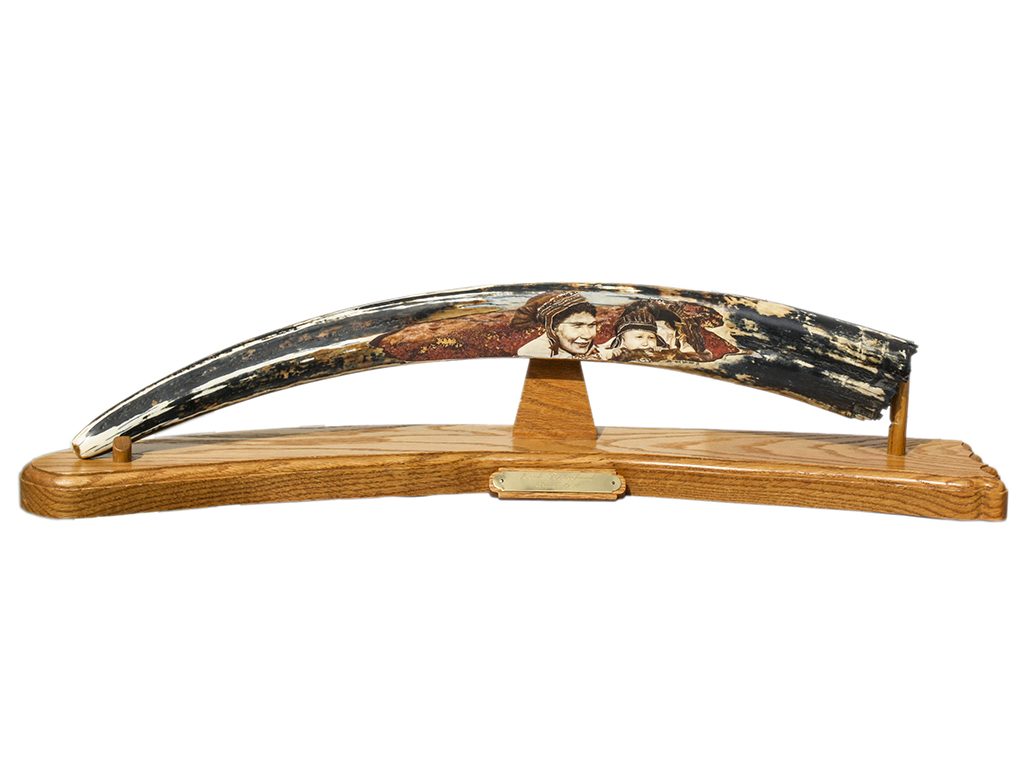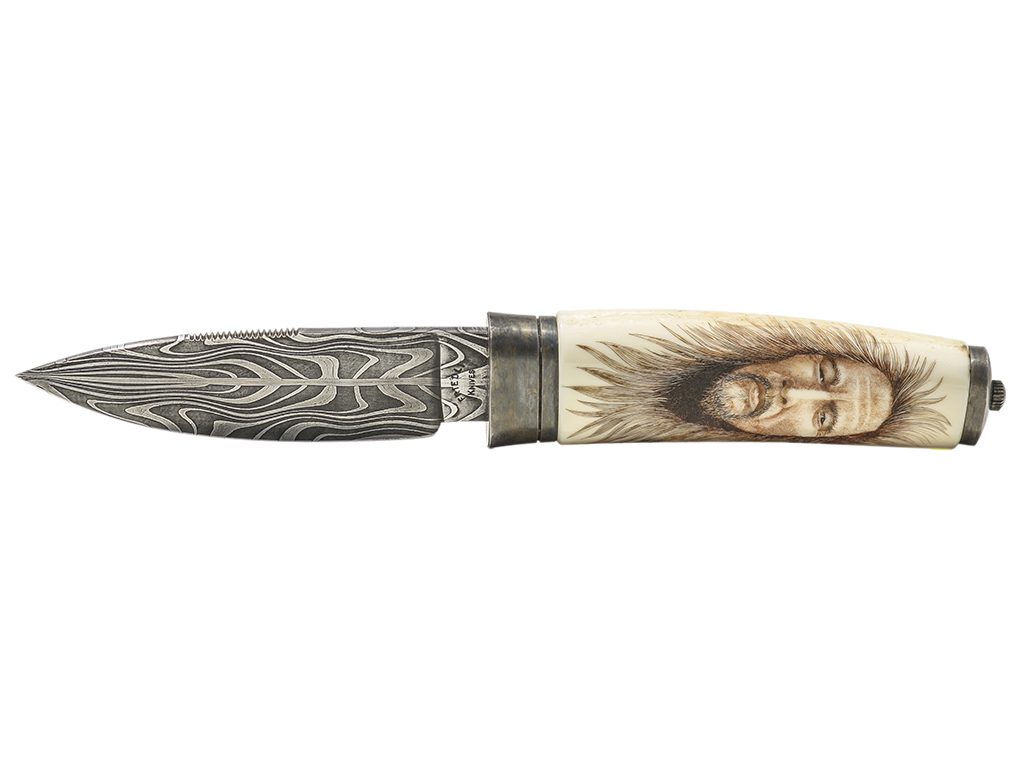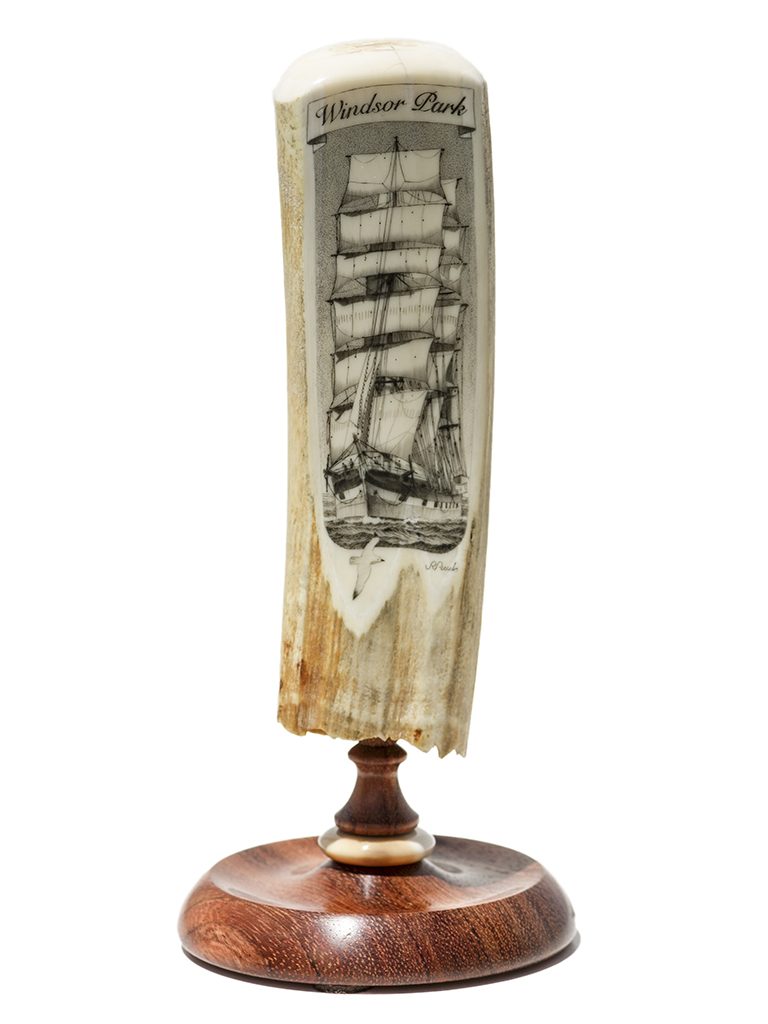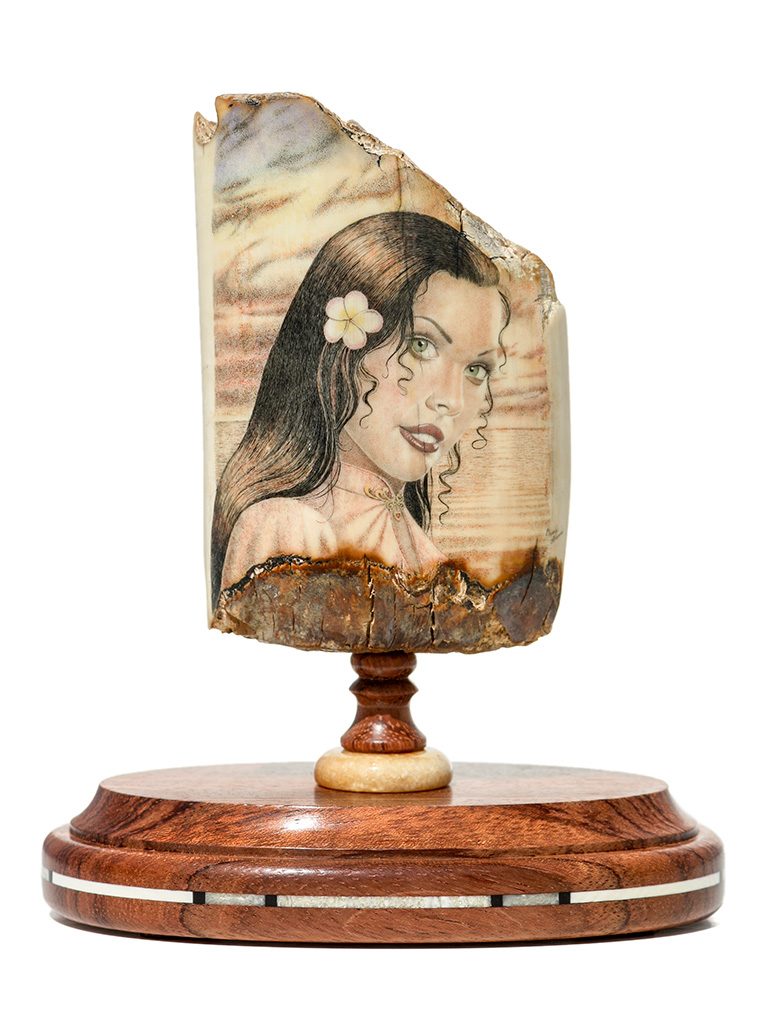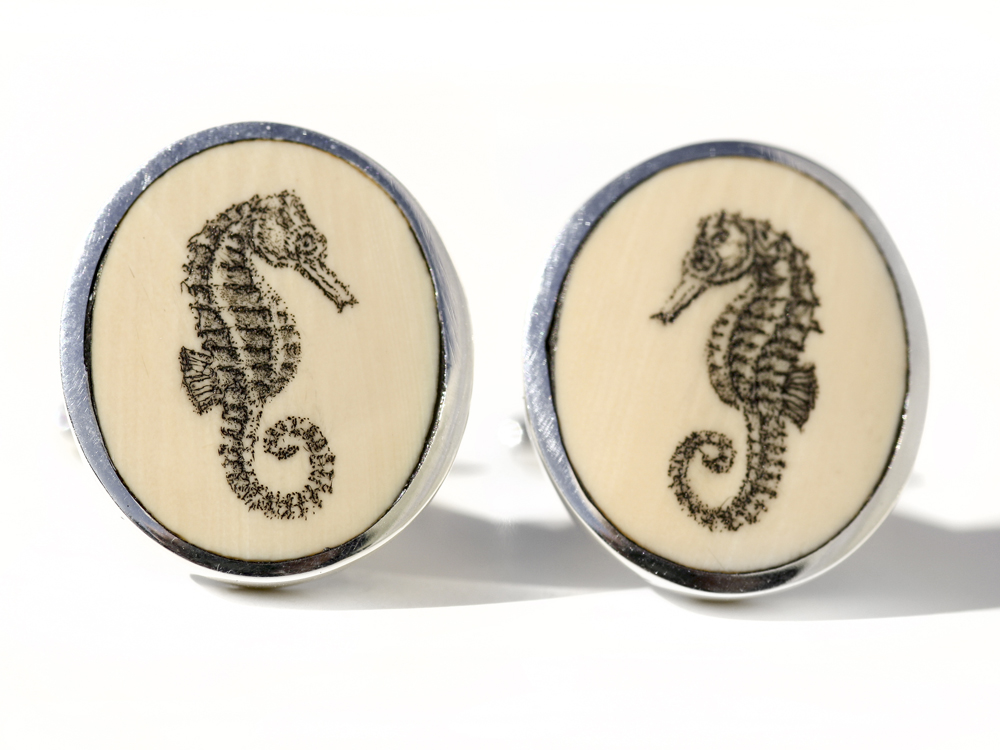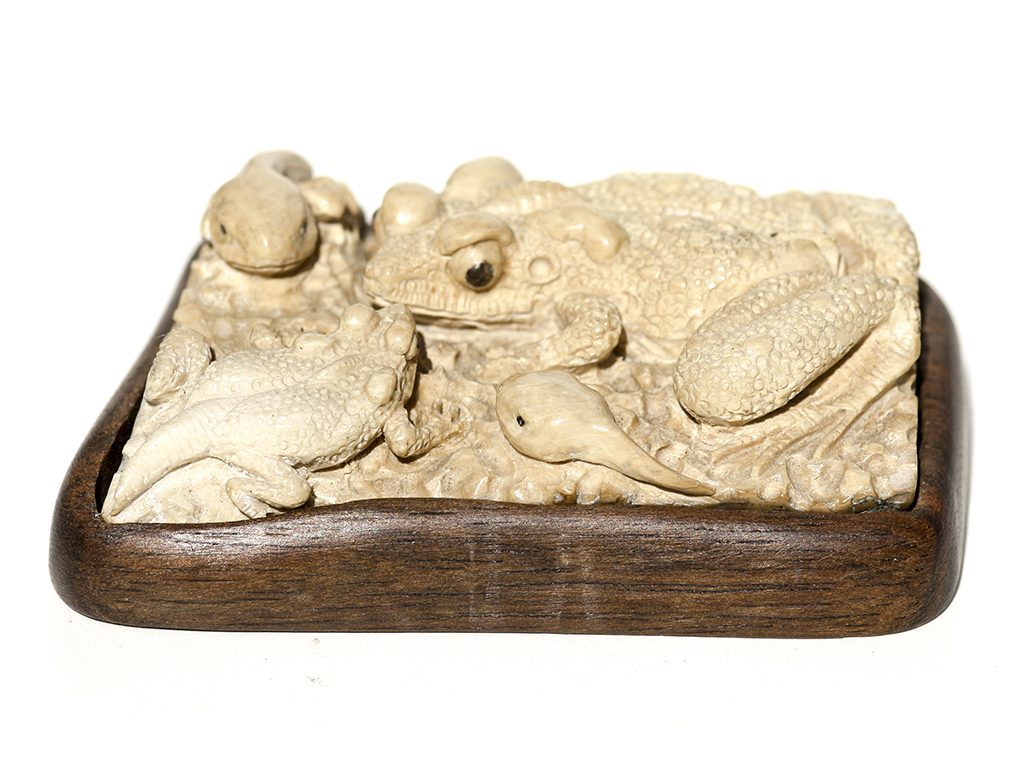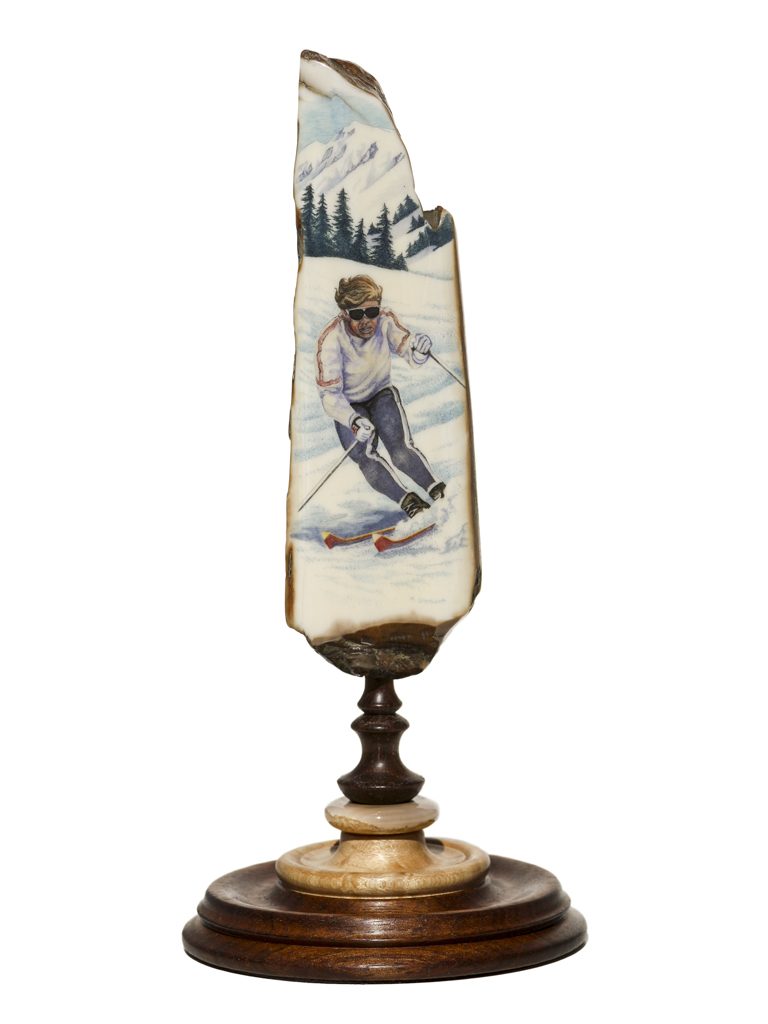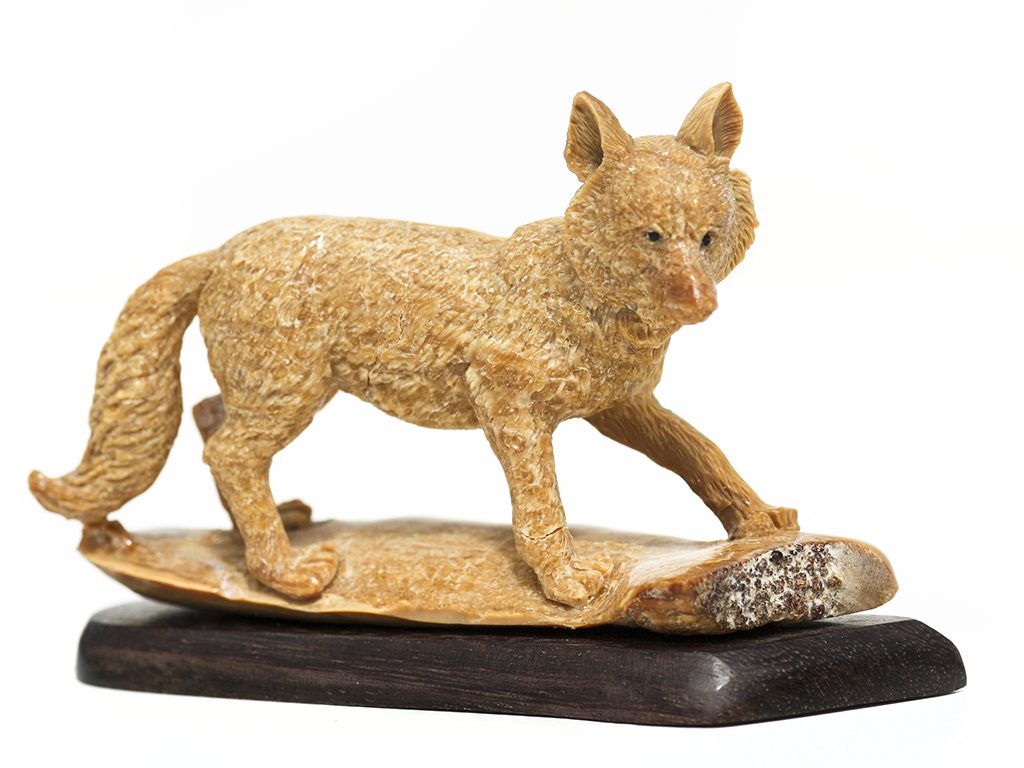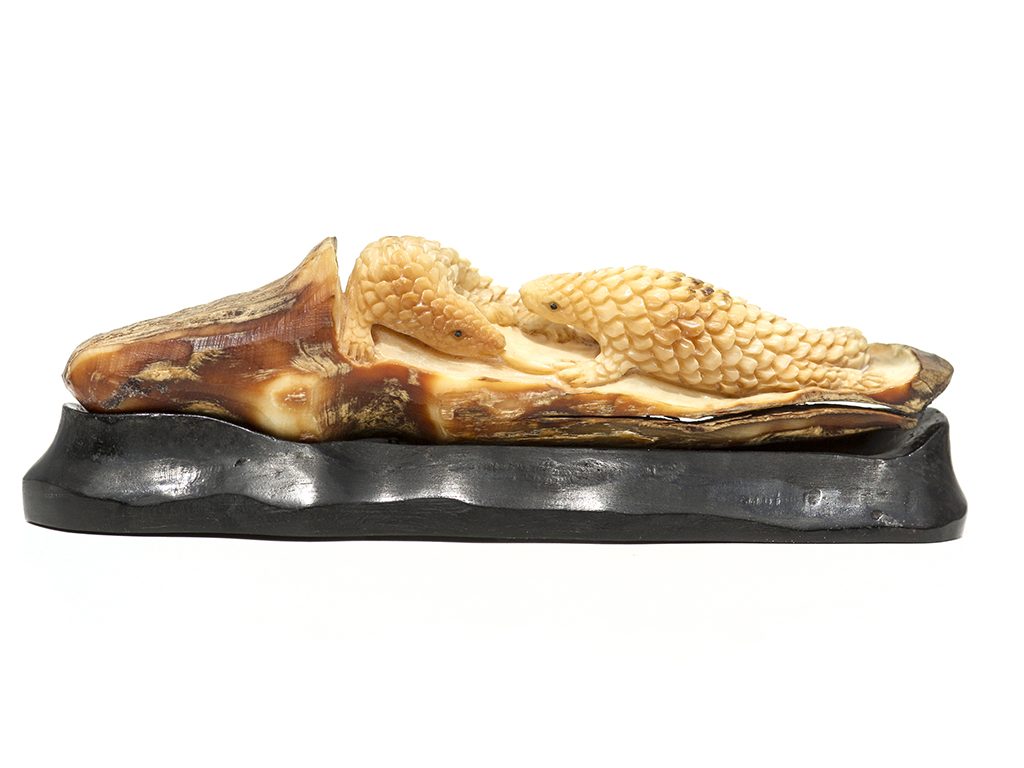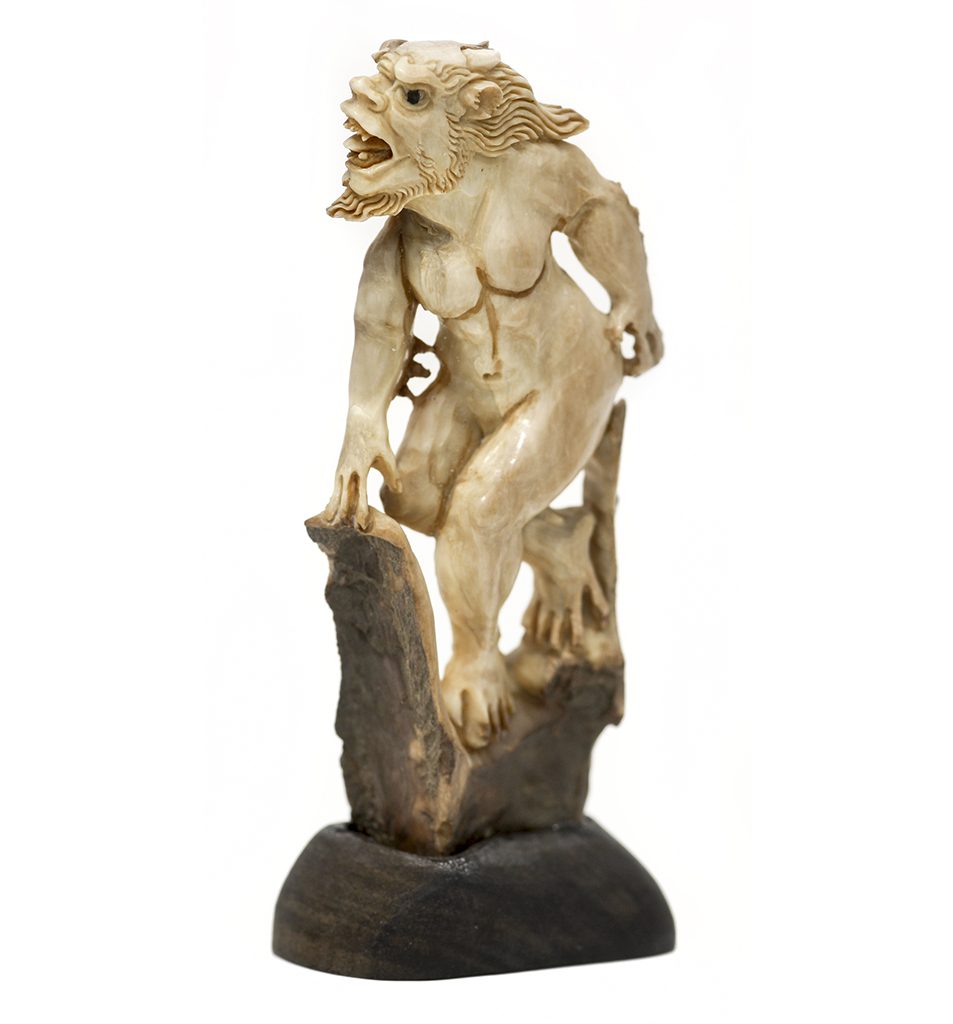“Lapps” color scrimshaw on complete ancient walrus tusk ivory by Heidi Robichaud. Created in 1984, this masterpiece is from the collection of one of our long time clients who is no longer with us. The way the scrimshander used the natural colors and tones in the ivory is simply amazing. This is one of those rare tusks that is black on the outside, but much lighter once it is polished. Originally, it came with a stand by the late Ken Fredericks, but the collector wanted all of his pieces mounted on oak stands. This one even has a brass nameplate. Just study the close up photos. Cannot say enough about this one.
‘Custom Scrimshaw Knife’ featuring the scrimshaw of Gary Williams, knifemaker Dennis Friedly and damascus by Eggerling done on ancient walrus tusk ivory. This one of a kind hunter by Friedly is impeccable. The blade by Eggerling is amazing “Cornstalk Damascus Steel”. Study the pattern closely as you may never see such a pattern again. Williams’s scrimshaw is beyond reproach, as usual. This is for the serious knife and/or scrimshaw collector. A true prize.
“Windsor Park Windjammer” black and white scrimshaw on ancient walrus tusk ivory by Jim Pauls. Known for his incredible straight line work, Pauls is considered one of the very best scrimshanders working today. He has worked with Scrimshaw Gallery and Scrimshaw Collector for over four decades.
|
Designed by:
|
Royden & Sons |
Length:
|
250′ 5″ | |
|
Built for:
|
A. Howden & Co. |
Displacement:
|
1761 tons | |
|
Built at:
|
Liverpool, England |
Type:
|
Iron ship (iron frame and plating) |
|
|
Launch Date:
|
1882 |
Cargo:
|
Steel rails | |
|
|
||||
Her first passage was quite good, 90 days to Saugar Light with a cargo of steel rails for the railroads in India. She spent ten years in the Calcutta and Australian trades and was then sold to Geo. Gorden & Co., of Glasgow, with Captain G. Lambie taking over command from Captain Bentley. One of the best passages on record was a cross-Pacific one of 37 days between Newcastle, N.S.W., and Valparaiso, where she arrived on August 9th, 1897. Unfortunately, the Windsor Park was known more for her long passages in crossing the Pacific than her short ones.
The ship had some unusually long passages homeward bound. In 1901 she took 172 days to go from San Francisco to the Lizard. In 1902 she took 173 days to reach Queenstown, and in 1905 she took 173 days again to go from San Francisco to the Mersey.
She had a narrow escape from ending her days on December 29th, 1906. She was grounded at Cape Racife while sailing between Wallaroo and Port Elizabeth, but assistance quickly came to her aid, and she was refloated.
The Windsor Park was one of those hard working windjammers whose main claim to fame was that she trained thousands of superb seamen in a way which cannot be done by a steamship. She may have been slow, but she kept the seas with few mishaps and made a steady living for thirty-nine years.
Portrait of Johanna color scrimshaw on ancient walrus tusk ivory artifact by David Adams. Simply stunning work by one of the very best working today. This blue eyed beauty is captivating. Love the matching tones of the marvelous sunset, the delicate flower and the blouse. Check out the pendant around Johanna’s neck. This is done on a very heavy (13 oz.) net sinker approximately 500-1500 years old. Not many of this size around today. Great work!
Seahorse scrimshaw cufflinks in sepia tones by David Smith on ancient walrus tusk ivory. One of our favorite Smith scrimshaw cufflink motifs. He has done a masterful job on this creamy mammoth ivory. Very delicate work for very delicate creatures. Set in sterling silver by Jenkins, this would make a great addition to any collection.
“Frog Family with Tadpoles” detailed carving on ancient walrus jawbone by unknown carver. This one has the whole family from adult frog, small frog and a couple of tadpoles thrown in for good measure. Very nice color in this ancient walrus jawbone. Great value in this one.
Notice:
This is ancient walrus tusk jawbone found in the Northern Bering Sea area. The material is 500-1500 years old and is occasionally found in ancient Eskimo camp and hunting sites. The marvelous colors are the result of minerals that have been absorbed into the jawbone over hundreds and hundreds of years. Obviously this material cannot be replenished, making it quite collectible and valuable.
Color scrimshaw on ancient walrus tusk ivory artifact by Matt Stothart. In over 40 years this is the only skiing related scrimshaw we have ever had. It is from the collection of one of our clients who is no longer with us. Very nice work by Stothart. The scoring marks on the ivory indicate that it was used as some type of tool hundreds and hundreds of years ago. Great price for just the ivory and stand. Could be a possible DIY?
Wolf carving done on ancient walrus tusk ivory by unknown artist. The color in this rare piece of ancient walrus tusk ivory is outstanding. The striking tones are the result of minerals which have been absorbed into the ivory over hundreds and hundreds of years when it was buried in the ground in the northern Bering Sea area. The alert young wolf seems to have sighted a prey. Nicely done. Not much of this color of walrus tusk around today.
Ancient walrus tusk ivory carving of iguana pair by unknown artist. Nice color in this ivory, the result of minerals absorbed into the ivory over hundreds and hundreds of years as it was buried in the northern Bering Sea area. This was used as some type of tool or artifact by the ancient people judging from the scoring marks on the underside of the piece. Cannot discern exactly how it was used, however. Nicely detailed work.
Leshy the Forest Demon carving on ancient walrus tusk ivory by unknown artist. This is from Slavic mythology
Leshy are masculine and humanoid in shape, are able to assume any likeness and can change in size and height. He is sometimes portrayed with horns and surrounded by packs of wolves and bears . In some accounts, Leshy is described as having a wife and children . He is known by some to have a propensity to lead travelers astray and abduct children, (which he shares with Chort the “Black One”) which would lead some to believe he is an evil entity. He is however also known to have a more neutral disposition towards humans, dependent on the attitudes and behaviors of an individual person, or local population, towards the forest. Some would therefore describe him as more of a temperamental being like a fairy.

